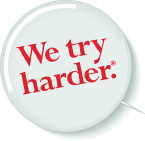|
Yesterday I got an email from Joe Addiego, a partner at Alsop Louie Partners. He sent a pointer to a portfolio company of theirs that's building a product based on the premise that in the future there will be "a million little stovepipes." I like that idea! A lot. I've been working on this problem in various contexts for many years. I bet lots of the data flowing between the stovepipes are in formats I had a role in creating. But we're not finished yet. There are some missing protocols. We know how pictures and other data flow, but how will our ideas flow between these different systems?
I don't mind if my words appear in your environment, but if I make a change I want you to get that too.
At the same time they're sucking in people's words and ideas, but presumably not being so generous about letting that stuff out. (That's where their siloness comes in.) For example, it used to be when I linked to a Flickr picture on Twitter, it would get up to 1000 views. Nowadays, they're getting almost none, because Twitter scarfs up the picture, moves it into their own space, and shows that picture to the people are looking at my tweet. In return, they don't have to leave Twitter to see the picture. What if they could do the same thing for a blog post? How would you make that work? It's kind of obvious, you'd do the same thing HTML does with images. The reason Twitter can find the picture is that a link to it is in the HTML source for the page you're linking to. What if there was a link to the "source text" of a page, the text of the article, embedded within the HTML? More of the author's intent would be transmitted because the destination has access to the pre-rendered copy. There would be more they could do with the text. As with all these things, the ideas don't really start flowing until you take the first step. That's why I have taken the first step. My blog posts contain links to the OPML source for the post. Do a view source on this page to see. Can you do a better job of rendering this story than I have done? I bet you can! |
 Imho we need to re-engineer the science of web writing. With the proliferation of social networks, in so many different flavors and sizes and shapes, we've created a problem re where our ideas live and how they flow between the possible viewing points. With a re-think, we can do much better. And the first step of a bootstrap is possible right now, today, in what remains of 2011.
Imho we need to re-engineer the science of web writing. With the proliferation of social networks, in so many different flavors and sizes and shapes, we've created a problem re where our ideas live and how they flow between the possible viewing points. With a re-think, we can do much better. And the first step of a bootstrap is possible right now, today, in what remains of 2011. 